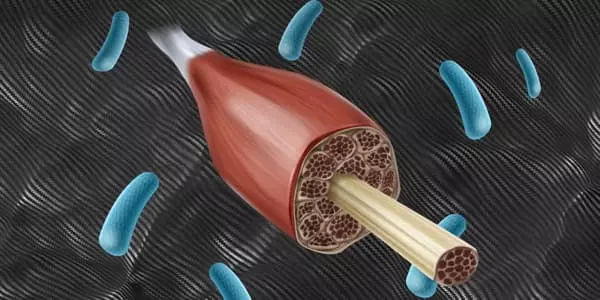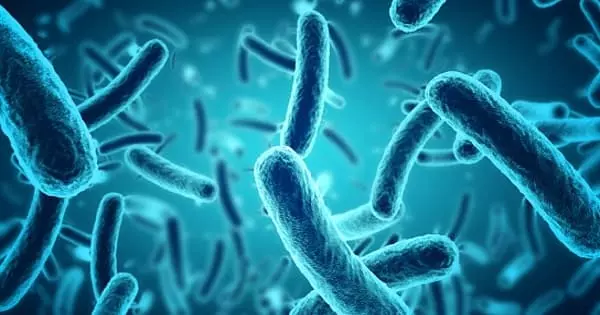Would you put on muscle-fiber clothing? Why not use them to tie your shoes or even as a belt? It may sound strange, but if those fibers can withstand more energy before breaking than cotton, silk, nylon, or even the material used in bullet-proof vests, why not? Don’t worry, this muscle could be created without causing any harm to any animals.
Researchers at Washington University in St. Louis’ McKelvey School of Engineering have developed a synthetic chemistry approach for polymerizing proteins inside engineered microbes. This allowed the microbes to produce titin, a high molecular weight muscle protein that was spun into fibers.
Their findings were published in the journal Nature Communications. In addition: “Its production can be both low-cost and scalable. It may enable many previously unimagined applications, but with natural muscle fibers, “Fuzhong Zhang, a professor in the Department of Energy, Environmental, and Chemical Engineering, elaborated. These applications may now be realized without the use of actual animal tissues.
The system’s beauty is that it’s really a platform that can be applied anywhere. We can take proteins from various natural contexts and polymerize them in this platform to create larger, longer proteins for various material applications with greater sustainability.
Cameron Sargent
Titin, one of the three major protein components of muscle tissue, was synthesized in Zhang’s lab. The large molecular size of titin is critical to its mechanical properties. “It’s the largest known protein in nature,” said Cameron Sargent, a Ph.D. student in the Division of Biological and Biomedical Sciences and the paper’s first author, along with Christopher Bowen, a recent Ph.D. graduate of the Department of Energy, Environmental, and Chemical Engineering.
Muscle fibers have piqued Zhang’s interest for a long time. Researchers have been attempting to create materials with properties similar to muscles for use in a variety of applications, such as soft robotics. “We thought, ‘Why don’t we just make synthetic muscles directly?'” he said. “But we’re not going to get them from animals; we’re going to get them from microbes.”
To avoid some of the problems that typically prevent bacteria from producing large proteins, the researchers engineered bacteria to piece together smaller segments of the protein into ultra-high molecular weight polymers around two megadaltons in size – roughly 50 times the size of an average bacterial protein. They then used a wet-spinning process to transform the proteins into fibers about ten microns in diameter, or one-tenth the thickness of human hair.

The group then analyzed the structure of these fibers with collaborators Young Shin Jun, professor in the Department of Energy, Environmental, and Chemical Engineering, and Sinan Keten, professor in the Department of Mechanical Engineering at Northwestern University, to identify the molecular mechanisms that enable their unique combination of exceptional toughness, strength, and damping capacity, or the ability to dissipate mechanical energy as heat.
Aside from fancy clothes and protective armor (the fibers are tougher than the material used in bulletproof vests), Sargent stated that this material has many potential biomedical applications. Because it is nearly identical to the proteins found in muscle tissue, this synthetic material is likely biocompatible and could be useful for sutures, tissue engineering, and other applications.
Zhang’s research team isn’t stopping with synthetic muscle fiber. Their microbial synthesis strategy will most likely enable more unique materials in the future. Bowen, Cameron, and Zhang have applied for a patent based on their findings.
“The system’s beauty is that it’s really a platform that can be applied anywhere,” Sargent explained. “We can take proteins from various natural contexts and polymerize them in this platform to create larger, longer proteins for various material applications with greater sustainability.”
Aside from its potential use in fancy clothing or protective armor, Sargent believes the material could also have biomedical applications. Because it is nearly identical to the proteins found in muscle tissue, this synthetic material is likely biocompatible and could be useful for sutures, tissue engineering, and other applications. “The fiber’s highly desirable combination of mechanical properties, sustainable production process, and biodegradability make it an excellent candidate for environmentally friendly applications ranging from biomedicine to commercial textiles (e.g., anti-ballistic materials, netting, sutures, and tissue engineering,” the team added.
“Its production can be low-cost and scalable,” Zhang added. “It may enable many previously unimagined applications, but with natural muscle fibers.” Zhang’s research team isn’t stopping with synthetic muscle fiber. Their microbial synthesis strategy will most likely enable more unique materials in the future. Bowen, Cameron, and Zhang have applied for a patent based on their findings.














